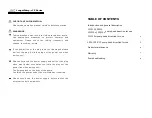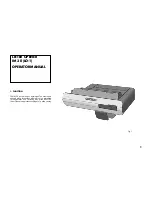
1
2. PREPARATION
1 Insert the paint head into the gun body by aligning the
arrows on the neck of the paint head and body.
Note:
Ensure the locking lever is rotated out of the way to
avoid damaging the locking lever.
1 When spraying horizontal
or low objects turn the
suction tube to the front.
1 Before pouring any paint
or thinners, work out how
much of each substance is
needed.
1 Submerge the viscosity
cup into the material to fill.
3 Time how long it takes to empty the cup. This is referred to
as DIN seconds.
It is vital to determine the viscosity of the coating material to
see if it is suitable to be used in the spray gun.
3 Rotate the locking lever
forward to secure the paint
head.
2 Rotate the paint head
clockwise into the correct
orientation.
2 When spraying overhead
objects turn the suction
tube to the back.
2 Pour the required paint
and thinners using a filter
into a mixing cup and mix
thoroughly.
2 Raise the cup out of the
material and start timing.
4 If the material is above 70 DIN-sec the material will need to
be thinned more and retested.
Inserting the Paint Head
Aligning the Suction Tube
Thinning
Determining Viscosity
NOTE:
FOR BEST RESULTS, SURFACE PREPARATION AND PAINT
THINNING ARE THE TWO MOST IMPORTANT AREAS. ENSURE
ALL SURFACES ARE FREE OF DUST, DIRT AND GREASE.
PAINT
THINNERS
PAINT
THINNERS
Thinning is particularly important when spraying. Most paints
are supplied ready for brush application and need to be diluted
sufficiently for spraying purposes.
Note:
Water based paints can be thinned using water.
Follow the manufacturers guide for thinning ratios which
should be labelled on the paint container.
IMPORTANT!
THE SPRAY GUN CANNOT BE USED WITH
MATERIALS CONTAINING ABRASIVE SUBSTANCES, GLAZES,
DISPERSION PAINTS, CAUSTIC AND ALKALINE SUBSTANCES,
TEXTURED COATINGS OR TOXIC SPRAYS.


























